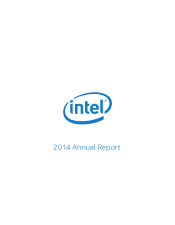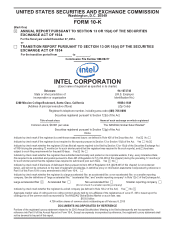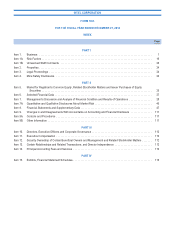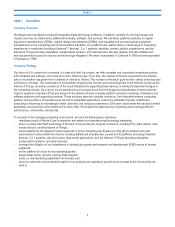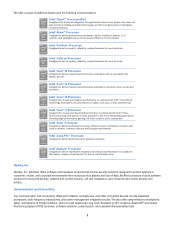Intel 2014 Annual Report Download - page 9
Download and view the complete annual report
Please find page 9 of the 2014 Intel annual report below. You can navigate through the pages in the report by either clicking on the pages listed below, or by using the keyword search tool below to find specific information within the annual report.Products
Platforms
We offer platforms that incorporate various components and technologies, including a microprocessor and chipset, a stand-alone
SoC, or a multichip package. A platform may be enhanced by additional hardware, software, and services.
A microprocessor—the central processing unit (CPU) of a computer system—processes system data and controls other devices
in the system. We offer microprocessors with one or multiple processor cores. Multi-core microprocessors can enable improved
multitasking and energy-efficient performance by distributing computing tasks across two or more cores. In addition, our Intel
®
Core™ processor families integrate graphics functionality onto the processor die.
A chipset sends data between the microprocessor and input, display, and storage devices, such as the keyboard, mouse,
monitor, hard drive or solid-state drive, and optical disc drives. Chipsets extend the audio, video, and other capabilities of many
systems and perform essential logic functions, such as balancing the performance of the system and removing bottlenecks.
We offer and continue to develop SoC products that integrate our CPUs with other system components, such as graphics, audio,
imaging, communication and connectivity, and video, onto a single chip. SoC products are designed to reduce total cost of
ownership, provide improved performance due to higher integration and the lowest power, and enable ultra-mobile form factors
such as tablets, smartphones, Ultrabook devices, and 2 in 1 systems, as well as notebooks, desktops, data center products, and
the Internet of Things.
We offer a multichip package that integrates the chipset on one die with the CPU and graphics on another die, connected via a
lower-power, on-package interface. Similar to an SoC, the multichip package can provide improved performance due to higher
integration coupled with the lowest power consumption, which enables smaller form factors. In 2014, we introduced our
5th generation Intel Core processor, code-named “Broadwell.”
We also offer features designed to improve our platform capabilities. For example, Intel
®
vPro™technology is a solution for
manageability, security, and business user experiences in the notebook, desktop, and 2 in 1 systems market segments. Intel vPro
technology is designed to provide businesses with increased manageability, upgradeability, energy-efficient performance, and
security while lowering the total cost of ownership. We also offer Intel
®
Iris™technology, which provides enhanced integrated
graphics for our 4th and 5th generation Intel Core processors. In 2014, we announced Intel RealSense technology, which
includes software and depth cameras that enable more natural and intuitive interaction with personal computing devices.
4

